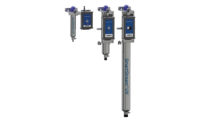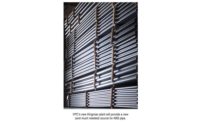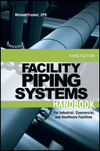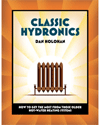Once in a while there comes a time when everything needs a little upgrade. Whether it is our car, our TV or our home it is important to make sure that what we have is ideal for the current climate.
In the case of the city of Cincinnati, upgrading the Richard Miller Water Treatment Plant with a progressive, state-of-the-art ultraviolet disinfection treatment system in 2013 was paramount.
“We have a very long history of being proactive,” Greater Cincinnati Water Works Chief Engineer Carel Vandermeyden says.
The long road
The initial thought of adding a UV system came in 1999. Vandermeyden states it was an incredibly thorough process to make certain a UV disinfection system was suitable — and necessary — for the Richard Miller Water Treatment Plant.
Vandermeyden has worked with the GCWW and the city of Cincinnati for the last 15 years, including the last seven in his current role as chief engineer and superintendent of engineering. Before that he was the head of operations with the GCWW and also spent many years as a private consultant in the engineering industry.
He and the GCWW commissioned multiple studies and reports on the viability of the UV process, including a hydraulic and location study and a bench-scale collimated beam study. The hydraulic and location study determined the best location of the UV treatment within the current treatment process, how flexible could the operation be and the total cost to own and operate the UV treatment process.
“We did a feasibility study to determine how UV would best complement our existing treatment processes to determine its effectiveness. That started in 1999 and lasted about one year,” Vandermeyden says. “Then we spent several years studying the placement within our current system – where would UV provide the most benefit from a treatment perspective, but also perform at the lowest cost?”
In 2005, the conceptual and preliminary design process got the green light, but Vandermeyden and his team took their time to perfect the plan. The team visited multiple large-scale water treatment plants – including plants in Seattle and Edmonton, Alberta, Canada. The cautious approach was smart because at the time UV still was an emerging process for water treatment.
“As we were going through that process, we took a holistic, long-range view (of the design),” Vandermeyden explains. “We did a long-range master plan. The reason for that was because UV technology was changing a lot for the water industry and so was the guidance we were getting from the EPA.
“We wanted to know, ‘If this happens, then we need to do this. Or if something else happens, how much UV dosing do we have to do? How would that affect our costs? How would that affect the size of the building?’ We did a master plan of different scenarios before we moved on to the final design and final value engineering.”
Vandermeyden believes leaving no stone unturned in the lead-up to construction was the right call for the overall project, the city of Cincinnati and its customers.
“It was a $30-million-dollar major investment for the GCWW,” Vandermeyden says. “Since it was newer technology we wanted to make sure we did our due diligence so we ended up with the right technology, in the right location, providing the best performance at the lowest overall cost.”
After construction, the UV plant is nearly 20,000 sq. ft. with 13,000 lineal ft. of 78-in. diameter concrete pipe installed. It also has 480 lineal feet of 48-in. diameter ductile iron UV treatment piping installed inside the facility.
The inner workings
Vandermeyden notes the Richard Miller Water Treatment Plant can treat 240 million gal. of water per day. The water that comes into the facility each day is divided among eight different 48-in. diameter pipes, each with its own UV reactor built inside. Those UV Calgon Carbon Sentinel 48-in. diameter Chevron medium-pressure reactors are 6-ft. long and have five UV lamps installed.
“As the water passes through each vessel the UV lights sterilize the water,” Vandermeyden states. “The UV light disrupts the microorganisms’ DNA so they cannot multiply and cause sickness.”
A major part of the crew’s long-view planning for the UV operations included an allowance for more reactors, which achieve the highest disinfection credit permitted under EPA drinking-water regulations. Vandermeyden states that the treatment process can be expanded in terms of a higher concentration than originally planned. There is space for two more complete reactor trains for a total of 10 and more lamps can be added to the lamps in the vessels. Finally, if UV technology continues to expand, the piping for the vessel can be enhanced as well.
“We made this project as flexible as we could,” he states.
The primary water source for the GCWW is the Ohio River. The water is pre-filtered to take out larger solids by using coagulation and high-rate sedimentation processes. Rapid sand filtration then removes small particles and impurities.
All water recovered through that gauntlet of filtration will pass through the GAC adsorption to remove organic materials. It only takes 15 minutes of empty bed contact to remove any organic materials from the water. The final stage is UV treatment.
The Richard Miller Plant, which is the largest North American facility to use UV light in combination with GAC and sand filtration on record, initially called for 160 solar panels on its roof, but that total was increased to 198. The solar array is a passive system, absorbing the solar radiation and turning it into energy that is fed directly into the building. It helps offset that energy the plant already takes “off the grid” for its operational needs.
“We wanted to make the facility as environmentally responsible and lower the carbon footprint wherever we could,” Vandermeyden says. “The UV facility does require energy and we wanted to offset that with solar panels. It offsets about 30% of its energy use.”
Large outreach
According to the Greater Cincinnati Water Works, the Richard Miller Water Treatment Plant supplies 88% of the drinking water to area customers, including the majority of the city of Cincinnati.
According to the GGCW, the Ohio Environmental Protection Agency has classified the Ohio River as “highly susceptible to contamination, as with all surface waters. This is because it is open to the environment and pollution may spread quickly with the flow of the river.”
Ohio’s EPA also says the river’s catchment area can be contaminated by municipal wastewater discharges, sanitary sewer overflows and storm water runoff from urban and agriculture sites.
The city of Cincinnati and the GCWW are adamant about protecting the public health via the city’s water system. Vandermeyden says the last thing the city wants is for there to be a crisis on or above the level of the Milwaukee cryptosporidium outbreak in 1993. In that case, Milwaukee’s Howard Avenue Water Purification Plant was contaminated and the cause remains unknown to this day.
The Milwaukee plant was shut down for two weeks and the 880,000 residents who were serviced by the Howard Avenue Plant were forced to boil water to kill the bacteria before using it in daily functions such as cooking. There were about 403,000 illnesses reported including cramps, fever, diarrhea and dehydration caused by cryptosporidium.
Tragically, there were at least 104 deaths attributed to the outbreak, mostly among the elderly and the immunocompromised, such as AIDS patients.
“We wanted to be proactive and added UV as another barrier to the ones we already had,” Vandermeyden says. “It’s added protection against these microorganisms such as cryptosporidium.”
Other public health safety options for the GCWW include turning off the intake and treating stored water until potential pollution passes.
“We monitor the quality of the water in the Ohio River and its treatment 24-7,” Vandermeyden states.
Avoiding disruptions
When Vandermeyden and his team began designing the UV operation they wanted to make sure it utilized gravity as much as possible. To ensure that gravity was properly utilized, the piping had to be placed deep underground.
“There is a large amount of water that flows through this facility each day,” he says. “We did not have to put in additional large pumps and incur that electrical cost. By allowing for gravity flow we had to construct the UV building fairly deep into the ground. We had to move quite a bit of earth, about 25,000 cubic yards.”
The construction broke ground in the fall of 2010 and because of an incredibly wet winter and spring, the project fell six months behind schedule. The project also required organized scheduling since service could not be interrupted to the GCWW customers.
“When we do a major construction project at an operating treatment plant, especially at a place as big as this, we make sure we don’t affect the plant’s ability to provide an ample supply of high-quality water to our customers,” Vandermeyden says. “You cannot simply turn off the water plant and connect the UV system to the existing process. You have to do that in sequencing steps and carefully plan that out.”
The project was installed during low production periods (during the winter months) and no more than half the existing plant was offline during a given time period. After the wet seasons of 2010 and early 2011, the project got back on schedule thanks in part to dry summers in 2011 and 2012.
“We made up a lot of ground and were still able to finish the project on time,” Vandermeyden says.
When Vandermeyden and the GCWW were done there was minimal additional cost to the customer.
“It was a major investment for us,” Vandermeyden says. “But in end, what is the impact on the customer? They’re getting a high quality of water and from a cost standpoint it’s about $1 per quarter on their water bill or about 30 cents per month.”







